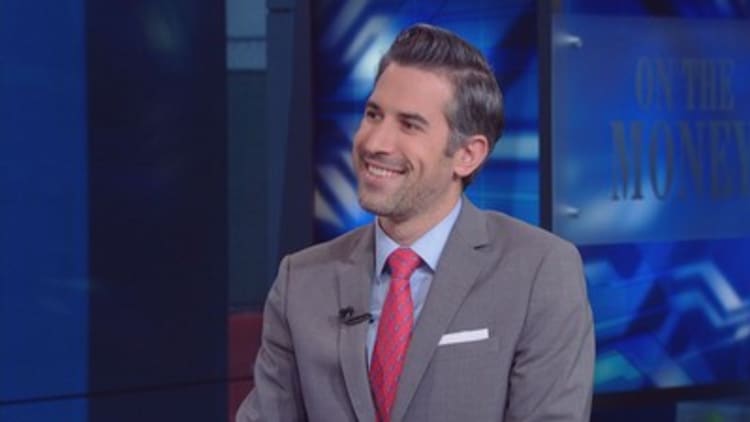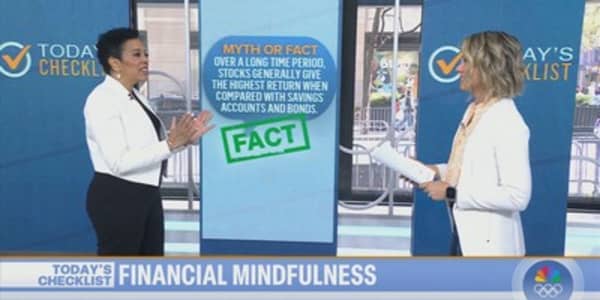Your workplace inbox will likely soon be inundated, if it hasn't been already, with exhortations from human resources to make the most of the upcoming short window to change your benefits for 2018.
That may trigger a deep-seated urge to punt.
An Aflac survey of 5,000 employees found that 92 percent of workers last year kept the same selections, and more than 80 percent spent less than an hour sussing out their options.
"People who roll into the same plan for the next year think they have the same coverage," said Skip Johnson, an advisor at Great Waters Financial in White Bear Lake, Minnesota.
That can be a costly assumption.
Even if you don't make any changes, your plan may have. For instance, employers are increasingly shifting more of health care costs onto employees.
And more employers have been adding the Roth 401(k) to their retirement plan. If you now have that option, it's worth considering.
Granted, inertia is only partly to blame for why you're not prone to give your benefits package the fine-tooth comb treatment. Two-thirds of employees surveyed by Aflac complain that making sense of benefits is too complicated and nearly 3 in 4 employees report there is some part of their coverage they don't understand.
All that comes at a cost: Aflac reported that more than half of employees estimate that are wasting up to $750 a year because of suboptimal benefit choices.
"At the end of the day, open enrollment is a trigger to try and get you to review your benefits," said Greg Hammer, president of Hammer Financial Group, in Schereville, Indiana. "It can be a pain, but it is so important."
Here's a cheat sheet to help you zero in on the big-ticket items to review:
Health insurance
Look beyond the premium. It's increasingly rare for employers to cover the entire bill for health insurance. The annual premium employees are on the hook for has risen 75 percent over the past 10 years, according to the Kaiser Family Foundation.
More workers also must now cover a deductible, which has also been on the rise. And then there's the creep of rising co-insurance payments. At a minimum, understanding your potential out-of-pocket costs might goose you to add to your emergency fund. Or you might want to check out other plans offered by your employer.
It can be a pain, but it is so importantGreg Hammerpresident, Hammer Financial Group
Carefully consider a high deductible health plan with a Health Savings Account. In return for taking on the financial responsibility of a higher deductible, the triple-tax break of saving in an HSA makes them a powerful back-door retirement savings strategy.
A recent Vanguard analysis estimates that $1 saved in a traditional or Roth IRA could be worth $1.64 in 20 years. The same dollar saved in an HSA could be worth $2.19. Just go in with eyes wide open: In the event you need medical care, you are going to cough up a sizable deductible. In 2018, the minimum single-coverage deductible is $1,350 and it's $2,700 for families. The annual out-of-pocket limit is $6,650 for individuals and $13,300 for family coverage.
Life insurance
Free can be an expensive mistake. Even if your employer provides a life insurance benefit, the free coverage likely has a death benefit that is a fraction of what you need to protect young children or other dependents. Once you decide the right amount of coverage, you can either buy additional coverage through your workplace group plan or purchase an individual policy.
"If you have any sort of health issue, even just high blood pressure, buying more coverage through the group plan can be cheaper than what you would pay for an individual policy," said Hammer. Even then, there can often be a limit on how much additional coverage you can purchase through your plan. If you are in good health, shopping for your own individual term life insurance policy is typically smarter.

Retirement savings plan
Opt in to automated help. Saving more and having a diversified investment portfolio are two key pillars of successful retirement saving. Sure, you know that, but following through isn't exactly a snap. That's where your plan might be able to help out.
Many 401(k) plans will automatically increase your contribution rate annually and may offer a service to periodically rebalance your portfolio to align with your long-term goals. The one catch: You have to sign up (opt-in) for these free services.
No auto-escalation? Use open enrollment as your nudge to ask that your contribution rate be increased for 2018. As a general rule, saving 15 percent of pretax income is considered a sweet spot for landing in retirement in good shape. Same goes for rebalancing.
Check out the Roth 401(k) option. Nearly two-thirds of 401(k) plans now offer the option to save in a Roth, in addition to the standard traditional account. "Anyone in the 10, 15 or 25 percent tax bracket should consider saving in a Roth 401(k)" Johnson said.
At those lower tax rates, it's less likely you will fall into a lower tax rate in retirement, boosting the potential payoff of having some tax-free retirement income from a Roth 401(k). Even higher-income savers might want to do some saving in a Roth. In retirement, being able to make tax-free withdrawals to handle unexpected expenses — say a big medical bill — can help you steer clear of tax-bracket creep. That's a big benefit.
More from Your Money Your Future:
Getting the best Medicare Advantage Plan
Use caution before joining the bitcoin frenzy





